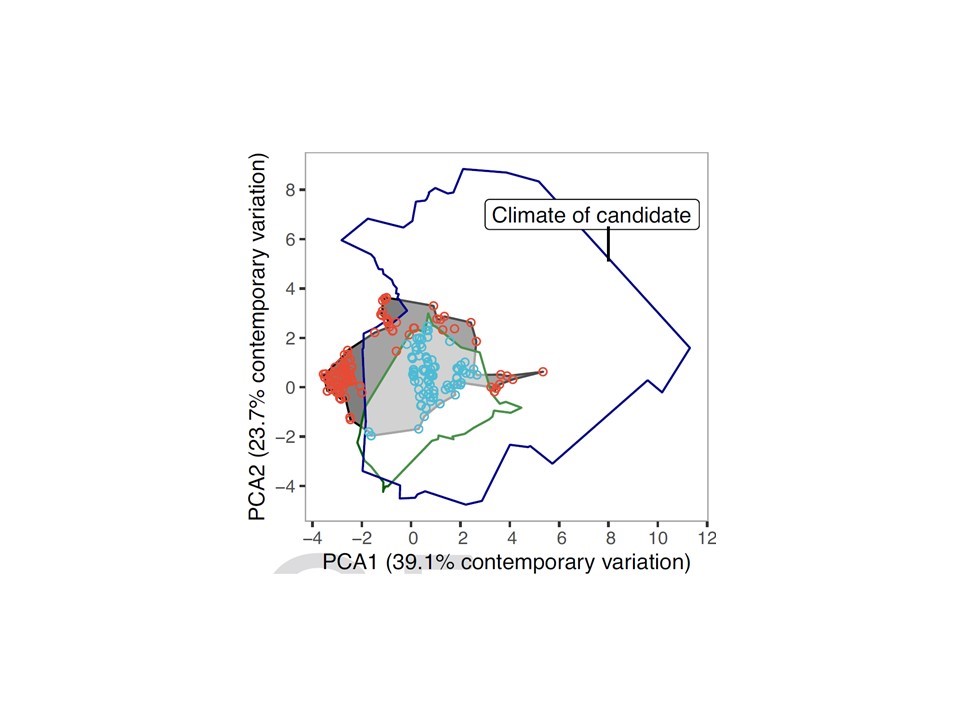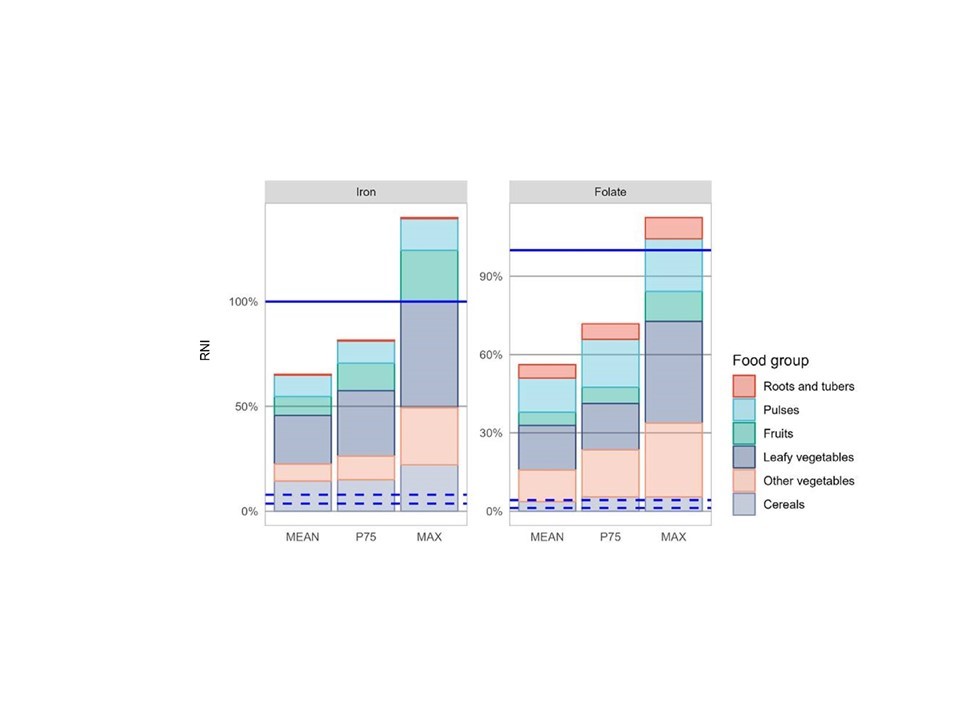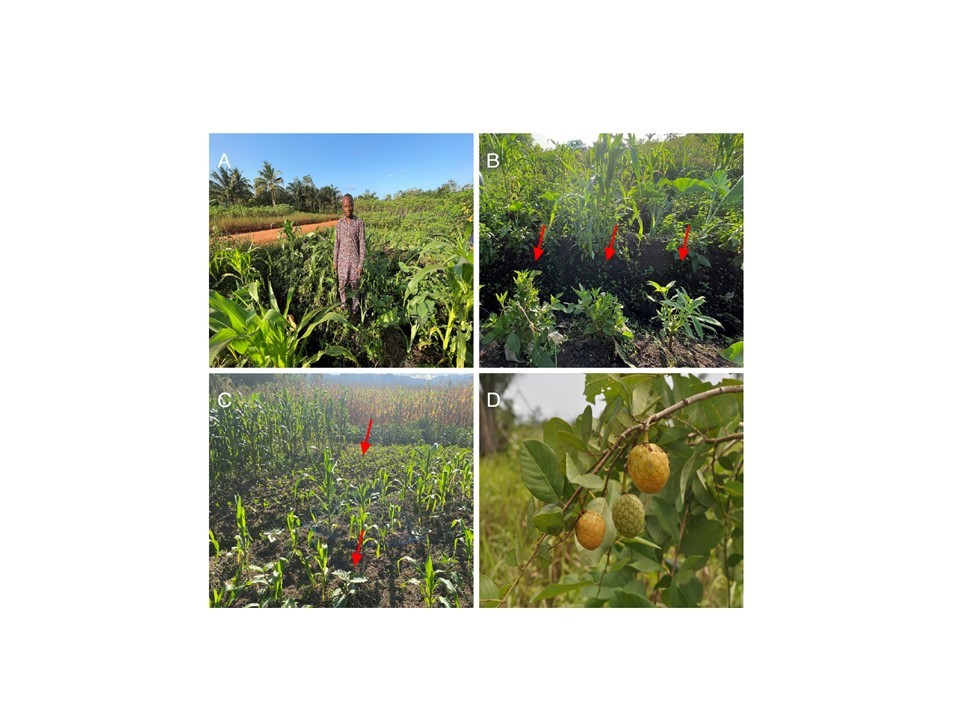


搶救非洲蔬菜種原刊登國際期刊
亞蔬研究團隊與臺大合作解決糧食與營養問題
非洲缺糧問題嚴重,再加上氣候變遷和極端氣候頻繁,全球生物多樣性正快速消失,並引發全球糧食安全之疑慮。造成飢餓和營養不良引發的危機,尤以非洲最為嚴重。臺灣關心非洲糧食問題,亞蔬-世界蔬菜中心,在臺灣外交部和農委會的經費贊助下,執行「臺灣非洲蔬菜倡議」。
這項倡議是由總部位於臺灣臺南的國際組織─亞蔬-世界蔬菜中心與非洲肯亞世界農林業中心(CIFOR-ICRAF) 、貝南國立大學(University of Abomey-Calavi) 和臺灣大學農藝學系等單位合作,致力於搶救非洲的蔬菜種原,提升蔬菜生產多樣性、提供多樣化的營養,解決糧食與營養問題。此一倡議之學術研究,以「氣候變遷下找尋撒哈拉以南非洲被遺忘的糧食作物以利健康飲食」為主題,於112年3月27日刊登於國際盛名具有高影響指數的《美國國家科學院院刊》(Proceedings of the National Academy of Sciences of the United States of America) 期刊,喚起大家對「被遺忘作物」的重要性。
亞蔬-世界蔬菜中心種原組組長方佐威博士(Dr. Maarten van Zonneveld) 表示,非洲的蔬菜種原逐漸流失,且其作物野生近緣種的保存不甚理想,為因應聯合國宣布的「2030永續發展目標」前三項,消除貧窮、零飢餓和確保健康,亞蔬-世界蔬菜中心提出「臺灣非洲蔬菜倡議」計畫,以評估、保護與利用非洲蔬菜之生物多樣性,助於提升當地的糧食與營養安全。亞蔬-世界蔬菜中心主任沃培睿博士(Dr. MarcoWopereis) 由衷感謝臺灣政府的慷慨贊助,使本計畫可以在臺灣邦交國史瓦帝尼、坦尚尼亞、馬達加斯加等非洲國家,保育當地的蔬菜種原,透過學校菜園、社區菜園提升當地區民之糧食自給率和營養。
由於撒哈拉以南非洲的野生近緣物種保存狀況差,方佐威博士與非洲肯亞世界農林業中心(CIFOR-ICRAF) 和貝南國立大學(University of Abomey-Calavi) 等研究人員,協同臺灣大學農藝學系林彥蓉教授(現借調至亞蔬-世界蔬菜中心擔任副主任一職) 與農藝學系謝葦勳博士候選人,針對這些撒哈拉以南非洲”被遺忘”的作物和野生近緣物種進行評估與分析,找尋更適應未來氣候環境且具營養價值的種質資源。野生近緣物種在自然環境下具有較高的耐病蟲害的能力,擁有尚未發現卻極具潛力的耐逆境相關基因。然而,由於土地利用、人為破壞自然棲息地以及飲食文化的轉變,許多野生近緣種或非主流作物逐漸被忽視或淘汰,導致其生物多樣性正逐漸消失。
此研究挑選138個被遺忘的作物及其野生近緣物種,究結合氣候和種原資訊,以氣候生態位模型(climate-niche model),預估在2070年時具有更佳的適應能力並且亦適合於非洲不同地區多樣栽培的替代作物。結果顯示,西非和中非兩地區的作物受未來氣候變遷之影響最為嚴重,其中對玉米和山藥的影響尤為明顯。另一方面,此研究評估這些”被遺忘”的作物之微量營養素,例如,鐵濃度最高的是葉菜類的莧菜和白花菜,以及腰果;葉酸則在青葙、白莧和綠豆最多。最後根據所有分析結果,將58 種被遺忘的糧食作物列為優先候選名單,這些珍貴的種原在微量營養素的供應上亦具互補性,極具潛力。
此研究展望至2070年,希望在撒哈拉以南非洲的作物栽培納入推薦「被遺忘作物」為優先候選名單,將可實現該地區在糧食生產上兼具氣候適應性和高營養價值的“雙贏”,藉此展現種原對於未來實現零飢餓和健康飲食的關鍵地位。亞蔬-世界蔬菜中心非洲研究團隊與臺灣大學農藝學系的合作成功地宣傳保存非洲蔬菜種原和糧食多樣化的重要性。

圖一、以玉米為例,撒哈拉以南的中非地區在於2070年時,超過三分之一原產區的氣候條件(紅色圓圈分布區域) 將不適合原有作物生長。剩餘三分之二的原產區仍適合玉米之栽培(淺藍色圓圈分布區域)。若納入繁穗莧(Amaranth cruentus) 為候選作物,則能適應於2070年之氣候範圍則可大大增加(深藍色框線範圍)。

圖二、研究依據候選作物可食用部分分類為根莖類、豆類、果實、葉菜類蔬菜、其他類蔬菜和穀類,並以每100公克可食用部位之不同營養元素含量(以鐵與葉酸為例) 轉換為成人每日參考營養攝取量(reference nutrient intakes, RNI) 呈現不同種類的食物群所能提供的營養元素比例。不論是鐵元素或葉酸,在葉菜類蔬菜中所含的比例最高。

圖三、在撒哈拉以南非洲地區,納入被遺忘的候選作物進行多樣化種植。(A) 一位貝寧農民在主要種植木薯的田裡同時種植芋頭、玉米和莧類作物。(B) 為貝寧正在進行的三個不同品種莧菜之公民科學實驗。(C) 史瓦帝尼以葉菜和果實類蔬菜作物合併玉米系統,實現多樣化。圖以玉米與紅茄(Solanum aethiopicum) 之間作為例。(D) 為貝寧廣泛種植之果實類作物,塞內加爾番荔枝(Annona senegalensis)。
雖然現在有一些地區已經開始多樣化的栽培模式(圖三),但還是可以發現許多具有潛力的作物種原尚未被調查開發或利用。一來是人力和水資源不足,二來是當地農民可能沒有相關知識或良好計畫以進行多樣化替代作物的栽培,這也是TAVI計畫的重要目標之一。臺灣大學農藝學系主要與世界蔬菜中心討論從上千種的作物物種中,如何挑選這些被遺忘的作物作為研究目標。
對一項研究來說,決定合適的試驗材料進行後續分析至關重要。因此,我們參考先前的非洲食物清單,例如非洲孤兒作物聯盟和非洲失落作物的物種清單。以現今市場需求並考量是否能支持撒哈拉以南非洲地區人民的健康飲食和地方經濟作為選擇依據。此外,這些作物在非洲研究背景也相對不足、種原利用或推廣不足,屬於被遺忘的作物,最後選出138個目標作物。
確立研究材料後,謝葦勳博士候選人從三個種原資料庫,全球生物多樣性資訊機構(Global Biodiversity Information Facility)、世界糧食和農業植物遺傳資源訊息和早期預警系統(WIEWS - World Information and Early Warning System on Plant Genetic Resources for Food and Agriculture) 與Genesys 種原資料庫,擷取並建立這138個被遺忘的作物之數據資料,例如學名、來源、食用部位和經緯度分布等,以供後續模擬分析使用。
相關連結:
https://www.chinatimes.com/campus/20230329004505-262301?chdtv
World Vegetable Center Collaborated with Its Partners and National Taiwan University to Address Food and Nutrition Issues
Global biodiversity is rapidly decreasing due to climate change and extreme weather, arousing doubts about global food security. Furthermore, the severe food shortage in Africa has caused crises of hunger and malnutrition. Taiwan cares about the issue of food security in Africa. The World Vegetable Center (WorldVeg) leads the "Taiwan-Africa Vegetable Initiative" (TAVI) under the financial sponsorship of the Ministry of Foreign Affairs (MOFA) and the Council of Agriculture (COA),.
WorldVeg is an international nonprofit organization headquartered in Tainan, Taiwan. WorldVeg collaborated with World Agroforestry (CIFOR-ICRAF) in Kenya, University of Abomey-Calavi in Republic of Benin, and the Department of Agronomy, National Taiwan University to execute the TAVI project. The purposes of the TAVI are to rescue the African vegetable germplasm, increase vegetable production, provide various nutrients, and further solve food and nutrition problems. The academic research of TAVI, titled "Forgotten food crops in sub-Saharan Africa for healthy diets in a changing climate", is published on 27 March 2023 in the outstanding international journal, Proceedings of the National Academy of Sciences of the United States of America, with a high impact factor, arousing the importance of "forgotten food crops" for people.
“The germplasm of African vegetables is gradually being lost, and the conservation of crop wild relatives could be better,” said Dr. Maarten van Zonneveld, the Genebank Manager of WorldVeg. In response to the goals in the UN agenda 2030 for "Sustainable Development Goals", no poverty, zero hunger, and good health and well-being, WorldVeg proposed the project TAVI to evaluate, conserve, and utilize the biodiversity of African vegetables, contributing to local food and nutrition security. Dr. Marc Wopereis, Director General of WorldVeg, is grateful for the support from the Taiwan government, enabling this project to conserve local vegetable germplasm in Taiwan allied nation Eswatini, Tanzania, and Madagascar; furthermore, the food self-sufficiency rate and nutrition could be also improved with the assistance of local schools and community gardens.
To solve the problem of poor conservation of wild relatives in sub-Saharan Africa, Dr. Maarten van Zonneveld’s team of CIFOR-ICRAF and University of Abomey-Calavi researchers collaborated with Professor Yann-rong Lin and phD candidate Wei-hsun Hsieh, Department of Agronomy, National Taiwan University. This team evaluated the “forgotten food crops” and their wild relatives in sub-Saharan Africa to find the nutritional germplasm that will be more suitable for the climate and environment in the future. Wild relatives possess high tolerance and resistance to diseases and pests in nature and also the undiscovered resistant genes with high potential. However, many wild relatives and minor crops are being neglected or eliminated due to land development, human destruction of habitats, and also changes in food culture, resulting in an ongoing loss of their biodiversity.
In their study, 138 forgotten food crops and their wild relatives combined with climate and germplasm data were assessed. The climate-niche model was used to estimate which crops have better adaptability and are more suitable for diversification and replacement in different regions of Africa in 2070. According to the results, the crops, such as maize and yams, in West and Central Africa will be most affected by future climate change. On the other hand, the micronutrients of these forgotten food crops have been investigated, for example, leafy vegetables, Amaranthus hybridus and Cleome gynandra, and one nut, Anacardium occidentale, have the highest iron concentration; for folate were Celosia argentea, Amaranthus graecizans, and Vigna radiata. Finally, 58 forgotten food crops were selected as the prioritized shortlist based on the results. In addition, the supply of micronutrients of these valuable and potential germplasm are complementary.
The prospect of this research extends to 2070 and aims to include the forgotten food crops in the prioritized shortlist for cultivation, achieving a "win-win" of obtaining good climate adaptability and high nutrition value on food production in sub-Saharan Africa. The critical role of germplasm in achieving zero hunger and good health is successfully demonstrated; moreover, the importance of conserving African vegetable germplasm and food diversification was well-promoted by the cooperation of WorldVeg’s African team and the Department of Agronomy, National Taiwan University as well.

Figure 1. The climate conditions in more than one-third of the original production areas of Central sub-Saharan Africa (the areas with red circles) will not be suitable for the cultivation of original crops, such as maize, in 2070. About two-thirds of the original production areas are still suitable for maize production (the areas with light blue circles). If Amaranth cruentus is included as the prioritized candidate, the range of crop adaptation to the climate in 2070 can be greatly expanded (the range circled by dark blue).

Figure 2. According to different edible parts, the prioritized African forgotten food crops were classified into roots and tubers, pulses, fruits, leafy vegetables, other vegetables, and cereals. The micronutrient compositions (iron and folate as examples) of different edible parts per 100 grams were converted to the daily reference nutrient intakes (RNI) of adults, presenting the proportion of micronutrients provided by six food groups. Leafy vegetables possess the highest proportion of iron and folate for RNI.

Figure 3. Crop diversification could be achieved by including the prioritized forgotten food crops in sub-Saharan Africa. (A) A Beninese farmer cultivates taroyam, maize, and amaranth within in the diversified field dominated by cassava; (B) Three different amaranth varieties are being evaluated as part of a citizen science experiment in Benin; (C) Maize cropping system diversified with leafy and fruit vegetables in Eswatini, for example, maize is intercropped with African eggplant; (D) The fruit crop, Annona senegalensis (wild custard) is widely cultivated in Benin.
相關連結(LINK):
https://www.chinatimes.com/campus/20230329004505-262301?chdtv

